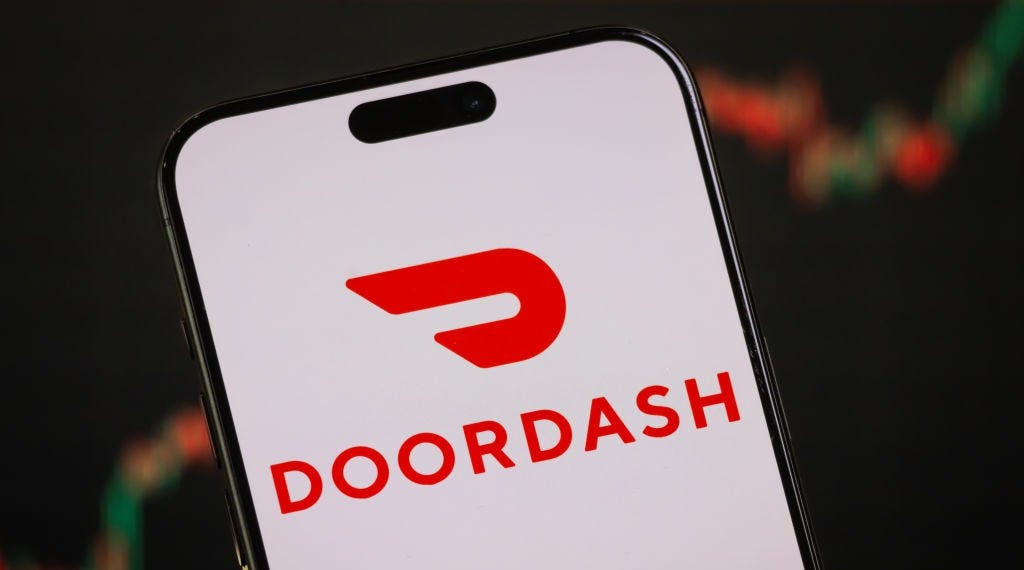DoorDash’s big, beautiful AI ad refresh
It's the company's “most significant update" to its advertising platform for restaurants
Get ready for a whole lot of DoorDash ads. The ordering and delivery app today debuted significant updates to its ad platform and shared news of an ad-tech acquisition to help restaurants run more ads in more places.
DoorDash is acquiring a relatively young ad-tech company called Symbiosys in a transaction worth $175 million. (The company did not elaborate on the terms of the acquisition.) Symbiosys has a self-serve ad platform that lets advertisers run search, social, and video campaigns, using retail sales data to target specific customers. DoorDash first partnered with Symbiosys last year, just a few months after the ad tech firm announced a $9 million Series A round of funding.
“We’re building the future of local commerce advertising,” Toby Espinosa, DoorDash’s VP of ads, said in a statement. “With new product capabilities, AI-powered tools, and Symbiosys’ offsite reach, businesses of any size can now connect with high-intent consumers seamlessly.”
In addition to the acquisition, DoorDash detailed a suite of AI-driven tools to help restaurants run effective ad campaigns. Restaurants set goals, targets, and budgets and DoorDash’s AI “does the heavy lifting,” creating customized campaigns and detailed performance reports. A rep for the company told me a one-location, independent restaurant can use the platform to track total sales, total orders, return on ads spend, and cost per action, a marketing metric measuring how much it costs to get a customer to click/purchase/whatever else.
DoorDash talks about its ads like it talks about any other part of its business: growth, while constant, is intentionally measured as not to compromise the customer experience.
In a May interview at JPMorgan’s tech and media conference, DoorDash chief financial officer Ravi Inukonda called the company’s approach to ads, “disciplined.”
“I often find it weird when peers or other companies come out and say, ‘Hey, here's the long-term target for ads as a percentage of GOV,’ because, to me, the merchant is not thinking of it that way,” he said, referring to gross order value, a metric representing the total value of everything sold on the platform, including taxes and fees.
“The merchant is saying, ‘Hey, just give me a better product,’ which helps drive more sales to the merchant,” Inukonda continued. “And as long as that happens, whether it's in-store or whether it's online, I think we can continue to scale that business.”
DoorDash says it now has over 150,000 advertisers in over 30 countries (this includes ads on Wolt, the European delivery company it acquired in 2022.) Last year, it crossed a $1 billion annualized ad revenue run rate globally, a stat the company shared in today’s press release but I put in italics because it’s a bit opaque. Run rates are a projection, not an achievement; DoorDash’s ads business didn’t actually reach $1 billion in revenue in 2024. But for a period of time, the company’s ad revenue crossed over into an amount that, multiplied to mimic the span of a year, reaches $1 billion. As a simple example: if the company’s global ad revenue in October reached $83.4 million (I am making this up), “annualizing” that number — multiplying it by 12 — equals an annualized run rate that crosses $1 billion. Companies use run rates to project future performance based on past data.
They also use the metric to celebrate successes in round numbers.
According to DoorDash’s press release: “Reaching this scale in just three years makes us the fastest-growing retail media network in history and a leading global growth engine driving local commerce.”
Delivery apps for restaurants (and beyond) have leaned on advertising to help grow overall revenue and to insulate its business should user growth or spend slow.
When grocery delivery service Instacart filed for its public offering two years ago, revenue was up 30 percent year over year. But it wasn’t because more people were buying more things. Per reports, the volume of groceries “barely budged.” Revenue growth came instead from selling ads on the platform.
Top DoorDash competitor Uber last year announced it, too, had hit a $1 billion annualized run rate in its 2024 ads business. Later, it attributed Uber Eats’ 2024 revenue growth in part to the money it made selling ads. Delivery has, almost certainly, become an ads business.
DoorDash’s Symbiosys acquisition further proves my ongoing thesis that DoorDash wants to make itself indispensable to restaurants. In this case, it’s offering a slick, well-packaged option for current and future customers to advertise on other platforms… while still taking a slice of the spend.




To me, the most significant aspect of DoorDash is that it has the WORST merchant UI and customer support on the face of the planet. I manage 4 restaurants on the platform and cannot use my email to manage more than one nor can I get them to respond to issues. Unbelievably bad. Boggles the mind that they are acquiring yet another company instead of fixing their merchant platform.